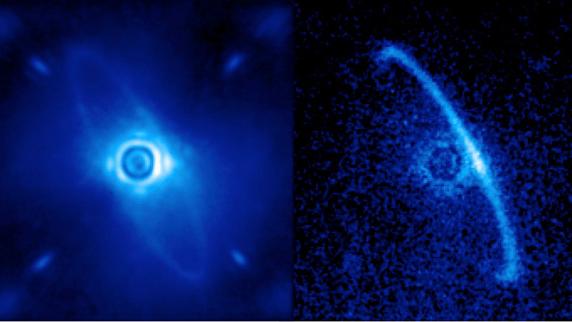betapictoris
Latest

Here's your clearest look yet at an alien planet in motion
That pixelated dot you see above may not seem like much, but it's a pretty big deal -- it's your best look yet at an alien world. Scientists have used the Gemini Planet Imager to capture the movement of Beta Pictoris b, a gas giant traveling around a star 60 light years away. That's no mean feat when the exoplanet is about a million times fainter than its host, requiring that the Imager block the star's light and compensate for the distortion of Earth's atmosphere. The visuals are important beyond bragging rights, we'd add, since they'll provide more insight regarding both the planet's composition and its relationship to nearby objects. Although it's going to be a long, long while (if ever) before you get clearly recognizable snapshots of an exoplanet, this abstract imagery has more than enough to keep scientists busy. [Image credit: M. Millar-Blanchaer/Dunlap Institute, F. Marchis/SETI Institute]

Hubble photo of a star can help scientists study how planets are born
The Hubble telescope has already taken a picture of the Beta Pictoris, a 20-million-year-old star surrounded by a large disk of dust and gas located 63.4 light years from our solar system, back in 1997. But in 2009, scientists discovered a giant planet orbiting that star once every 18 to 20 years -- the first planet they've ever seen that's embedded in a debris disk. So in 2012, they used the Hubble again to take a clearer picture of the star in visible light, which they've just released to the public. The image reveals that the disk has barely changed since 1997 and that the giant planet's gravity has distorted its inner part.

Gemini Planet Imager photographs alien worlds in just a minute
Although it has been possible to take direct photos of exoplanets for a few years, the technology involved has been low-resolution and slow -- it can take up to an hour to get a crude shot of a dimly-lit world. It's much easier with the recently launched Gemini Planet Imager (GPI), though. Scientists have released early images from the Chile-based instrument that took a mere minute to capture, and reveal more detail than ever before. Researchers have already spotted a full dust ring (seen at left) and the spectrum of a young planet. The imager's secret ingredient is a deformable, etched silicon mirror that can correct for atmospheric distortion much more effectively than traditional glass. GPI is still relatively untested, but it should ultimately let astrophysicists focus on quality over quantity when studying alien worlds.

